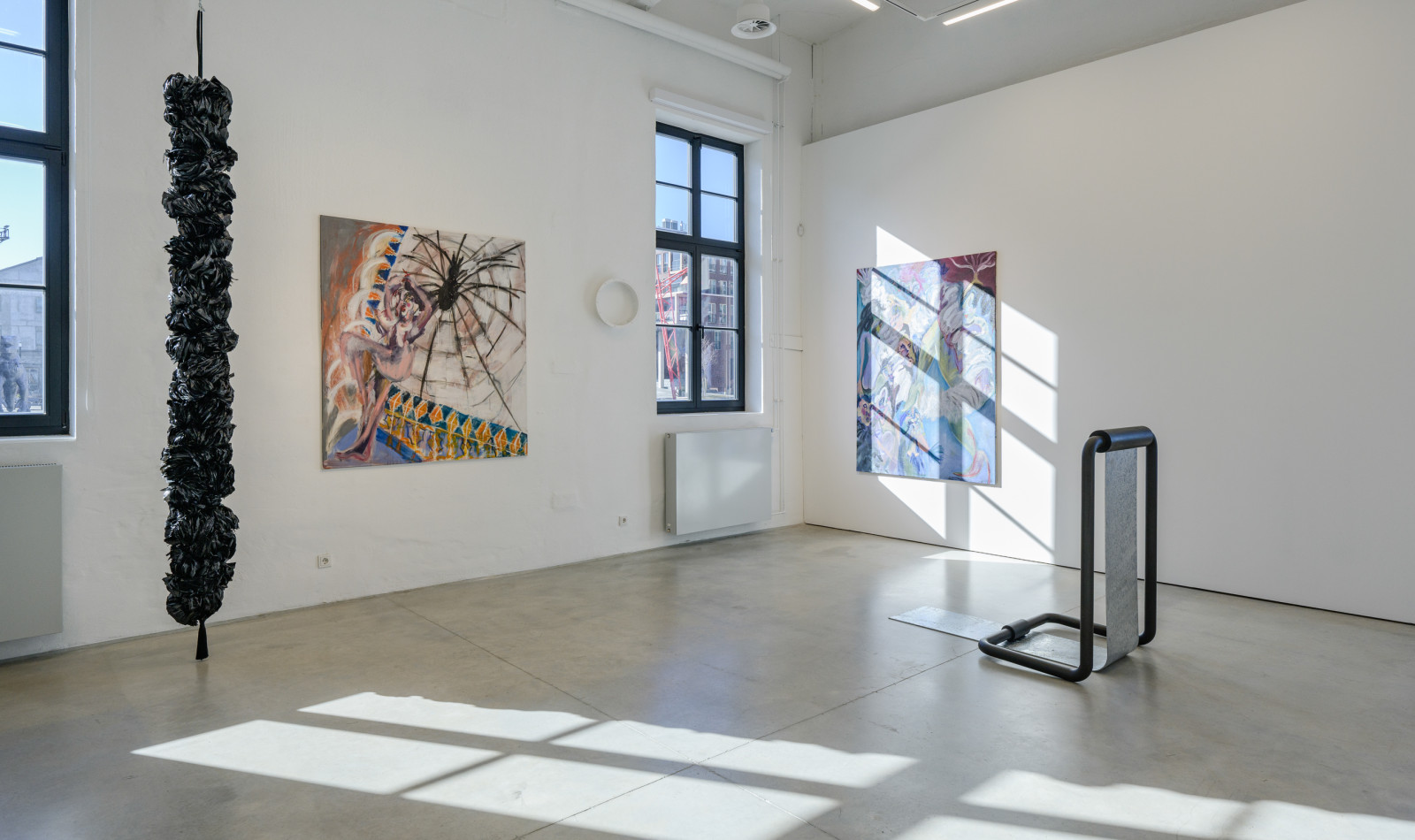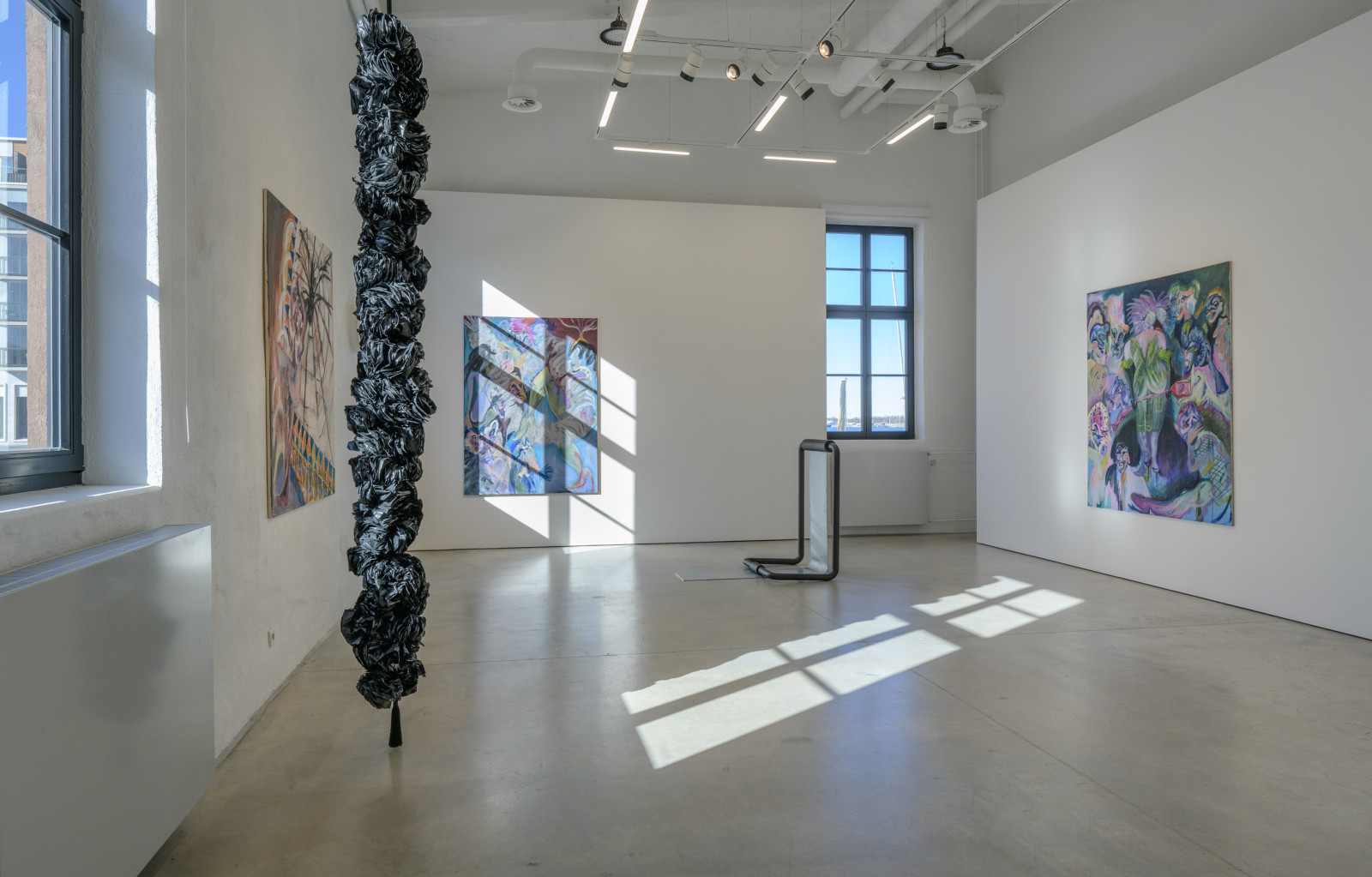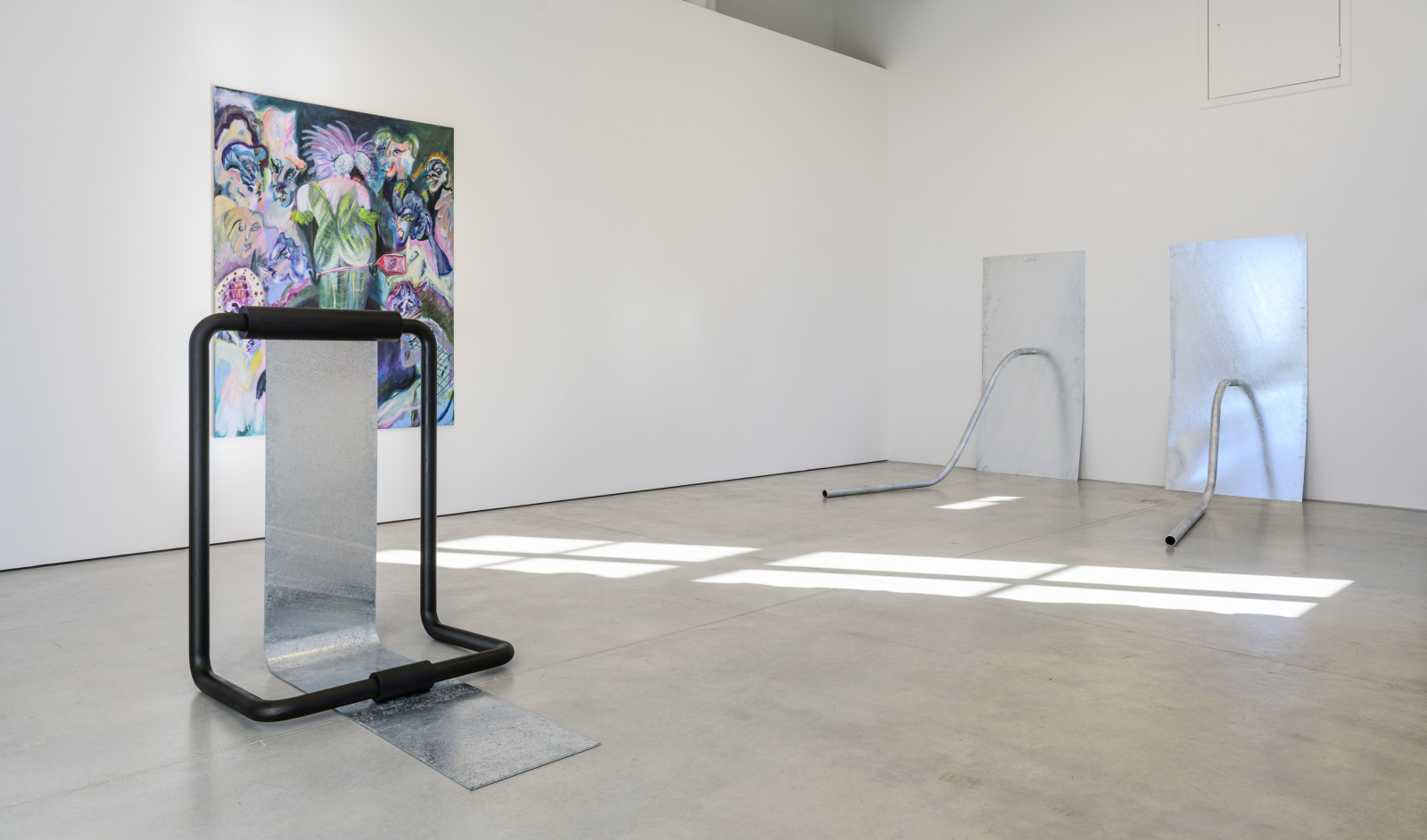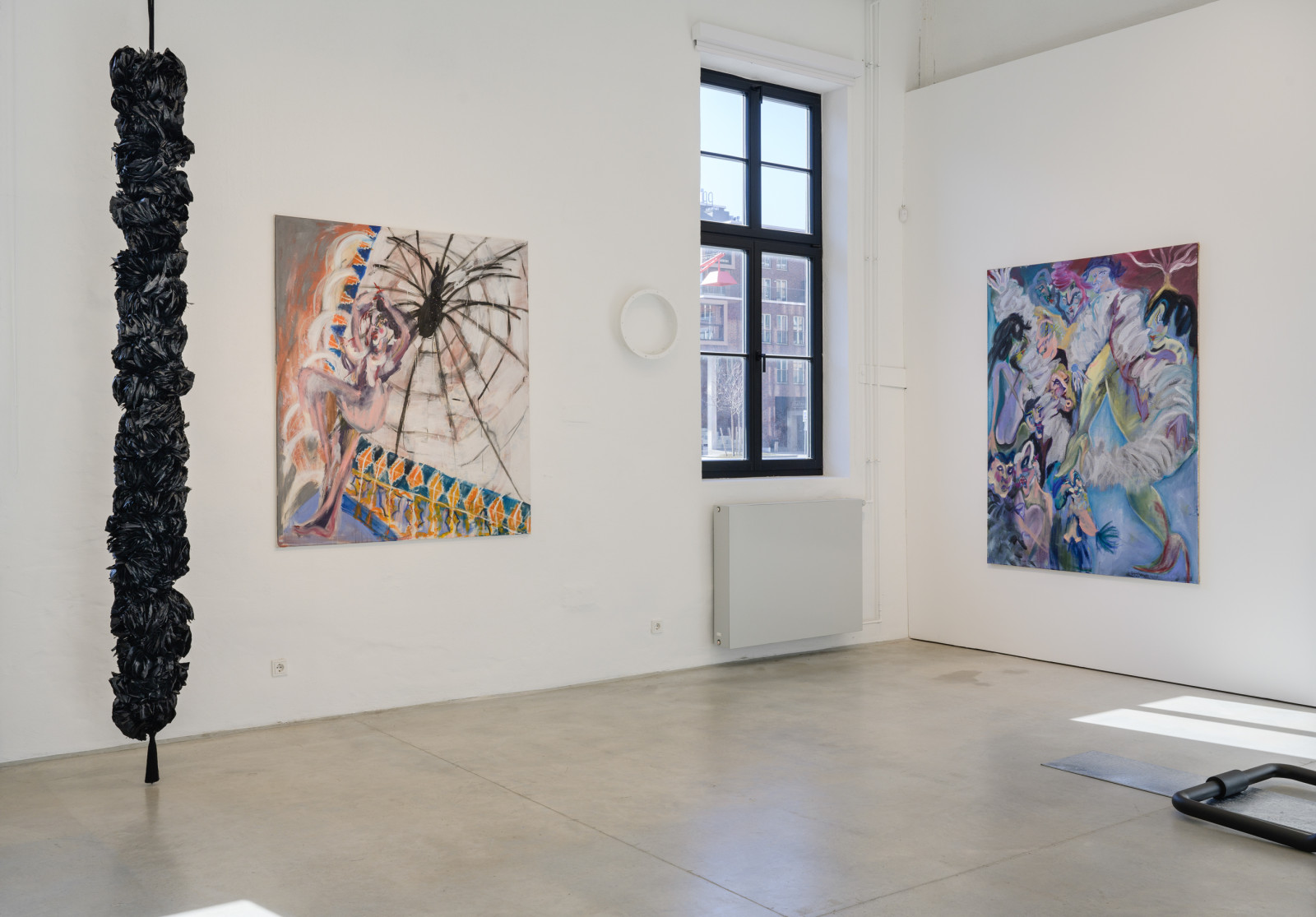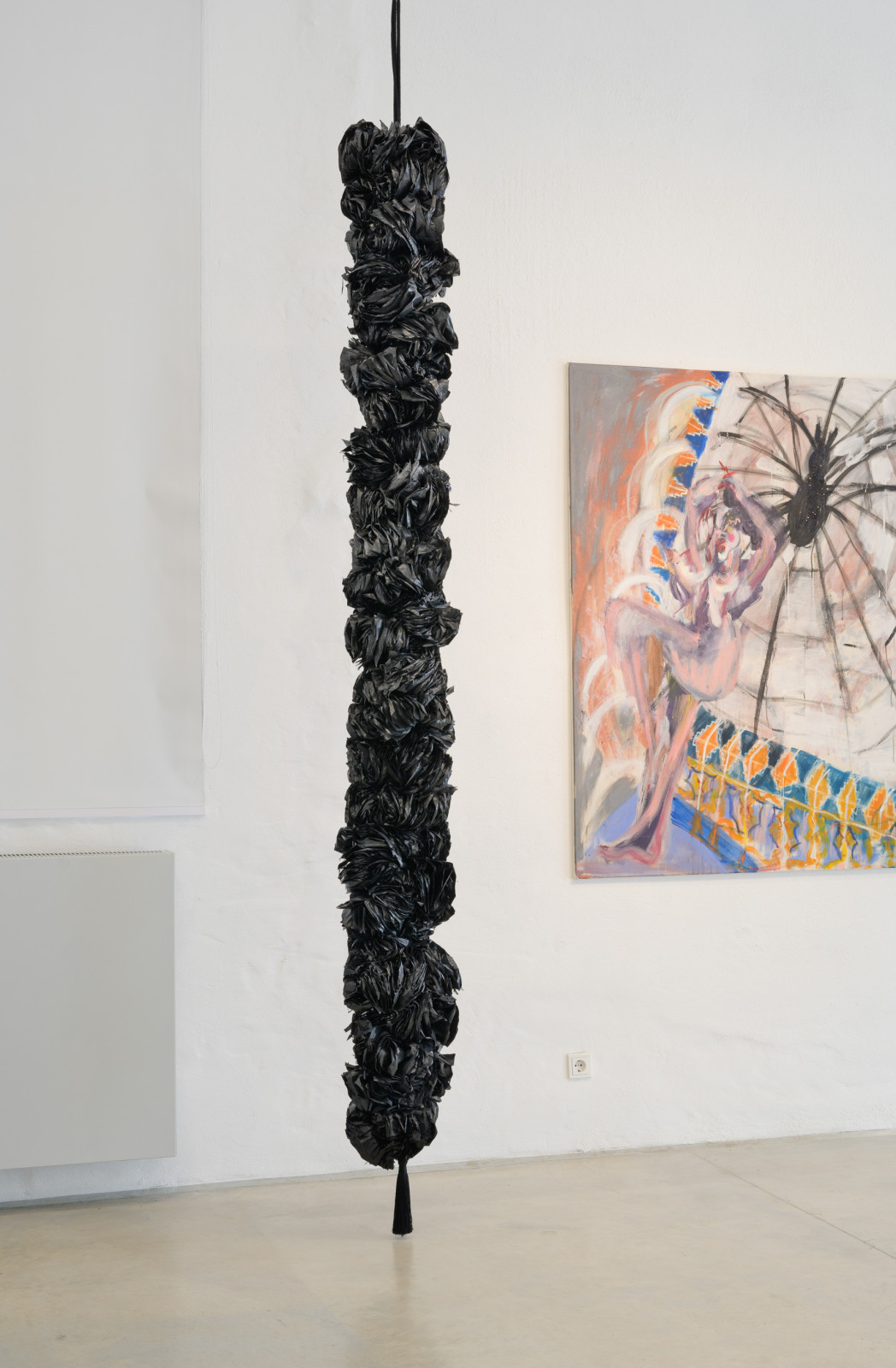Sevina Tzanou and Toni Schmale 'final fantasy'
-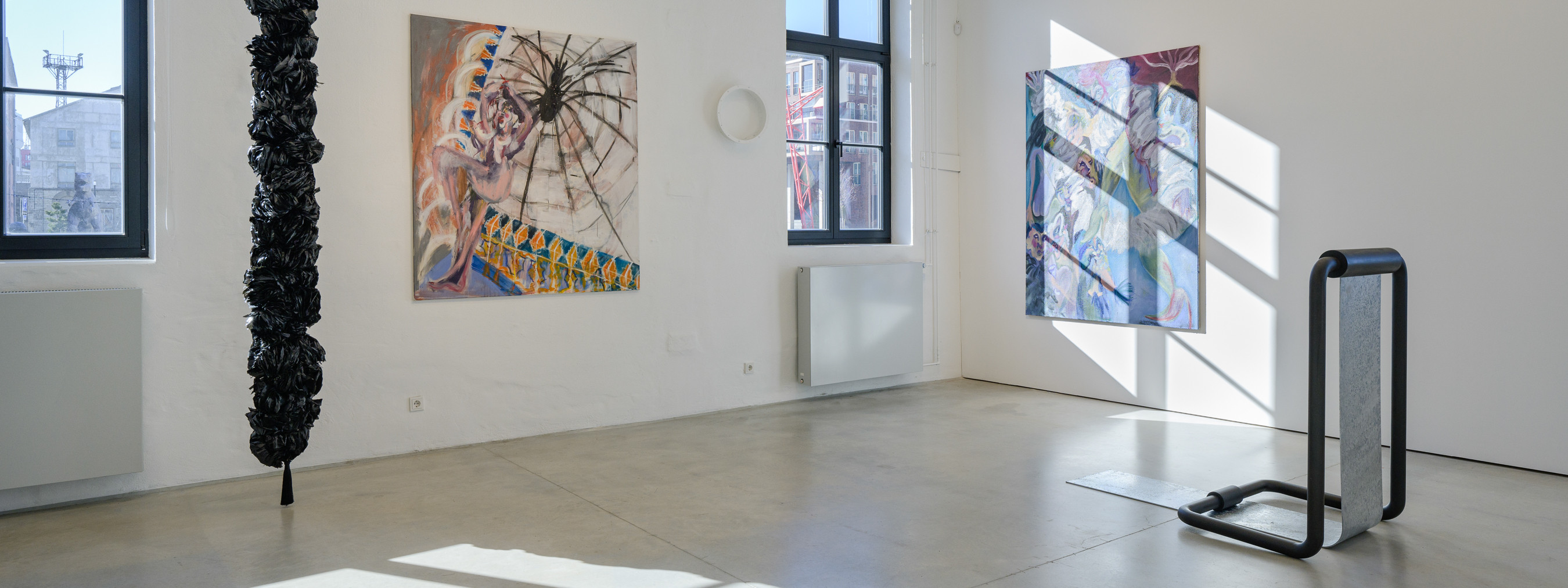
selected works
View: ,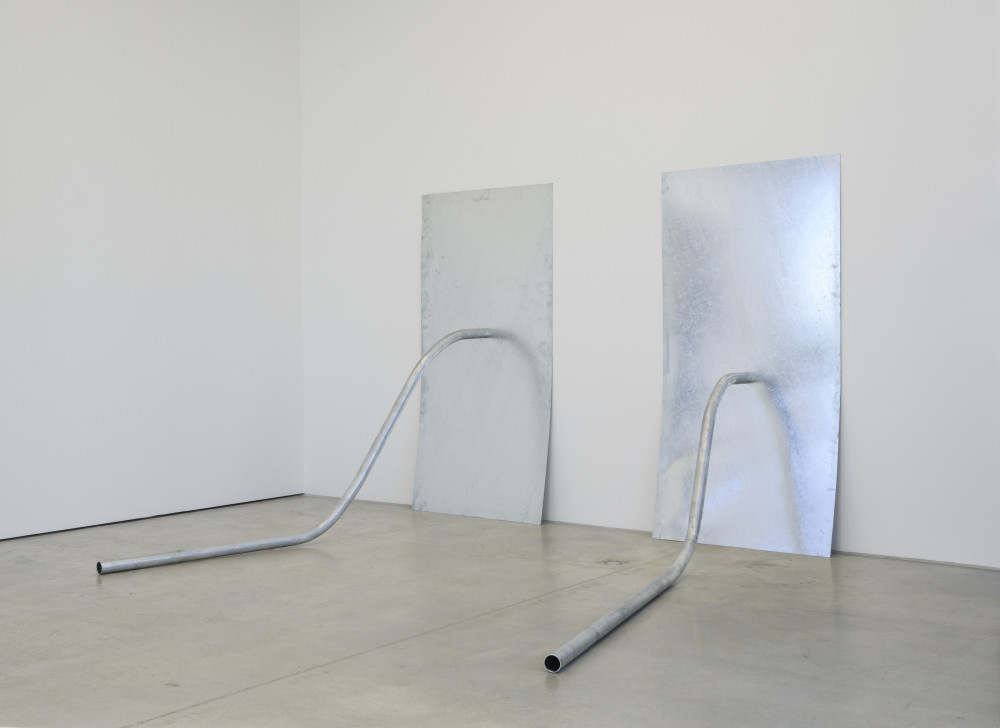
'schlauch #1'
forged steel, hot-dip galvanized 200×100×256cm 2022
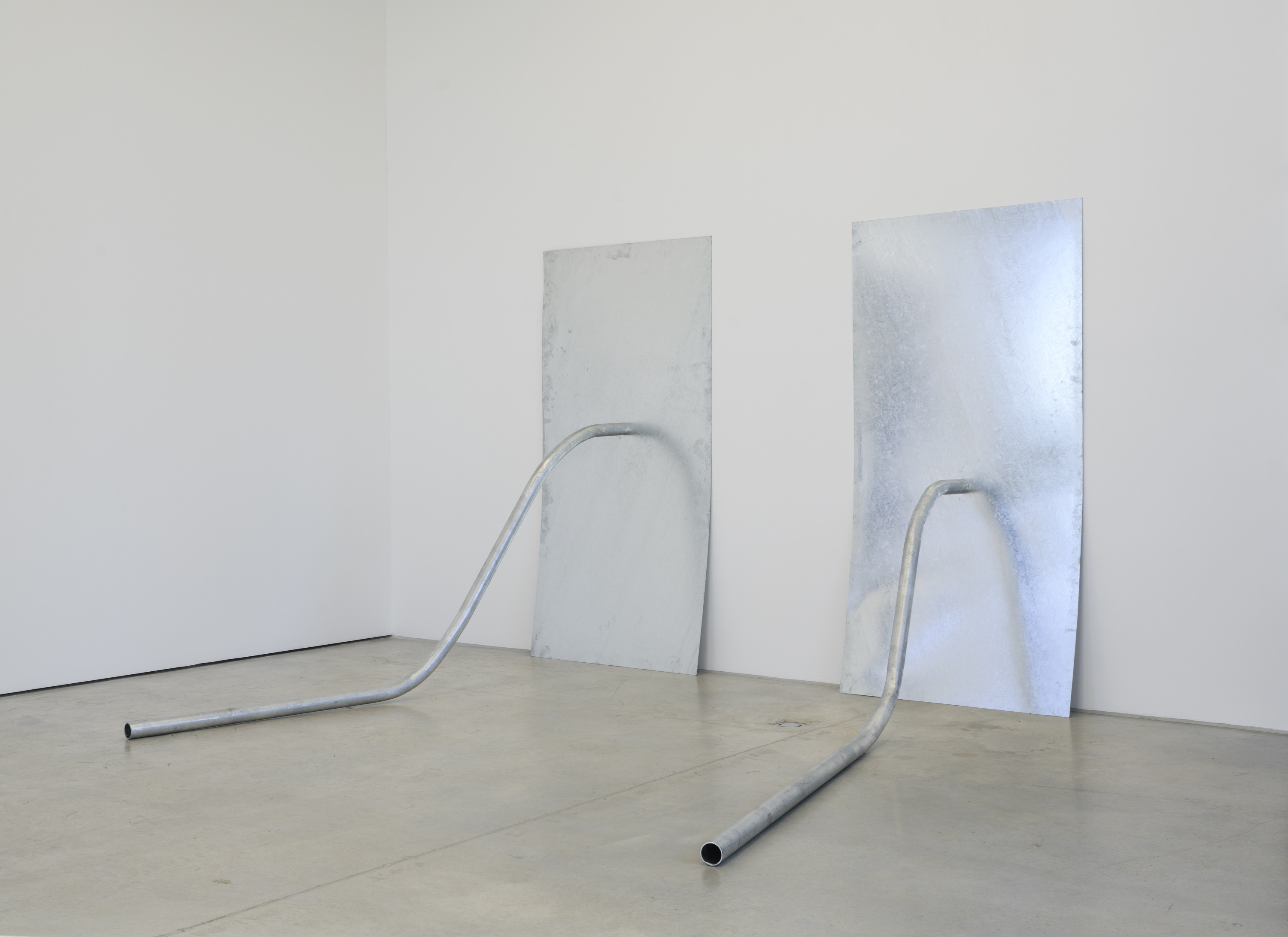
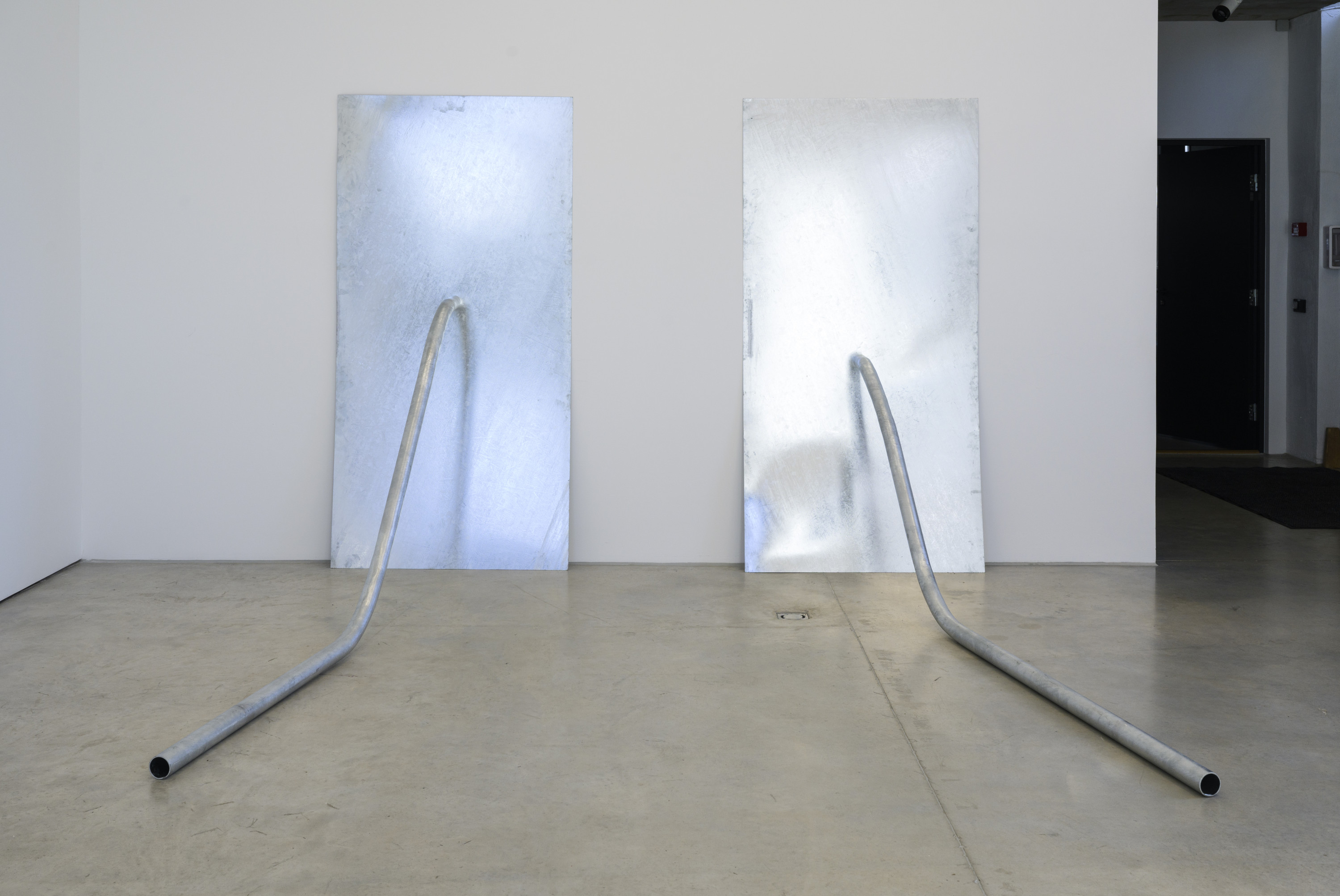
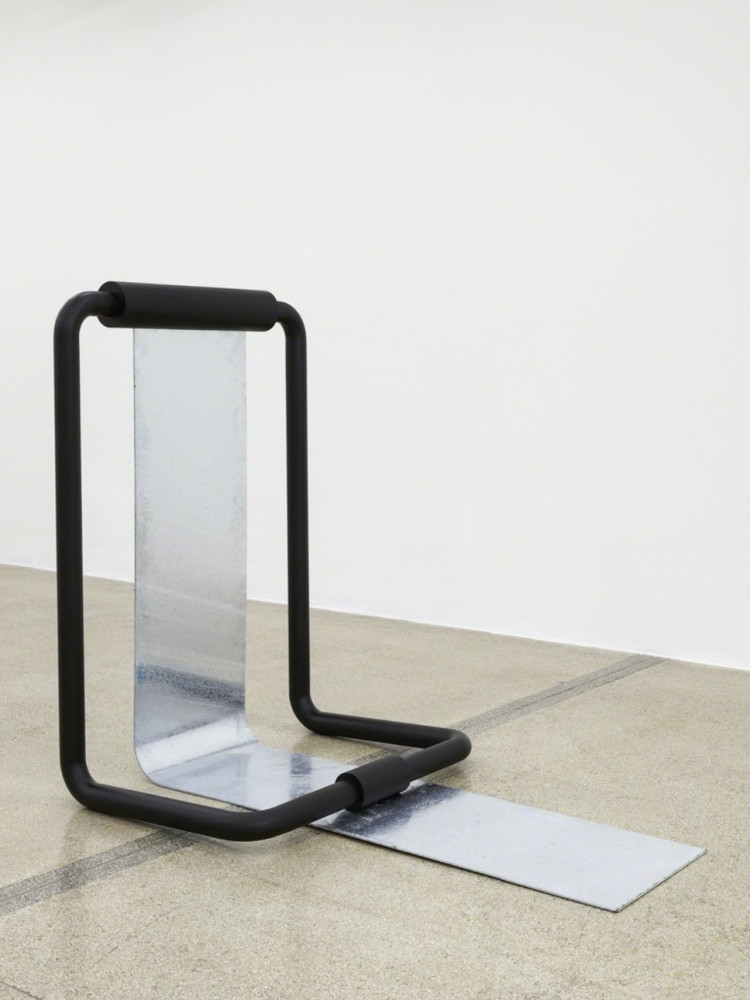
'das management'
sandblasted steel, black-finished, oiled, hot-dip galvanized steel 136×88×126cm 2017
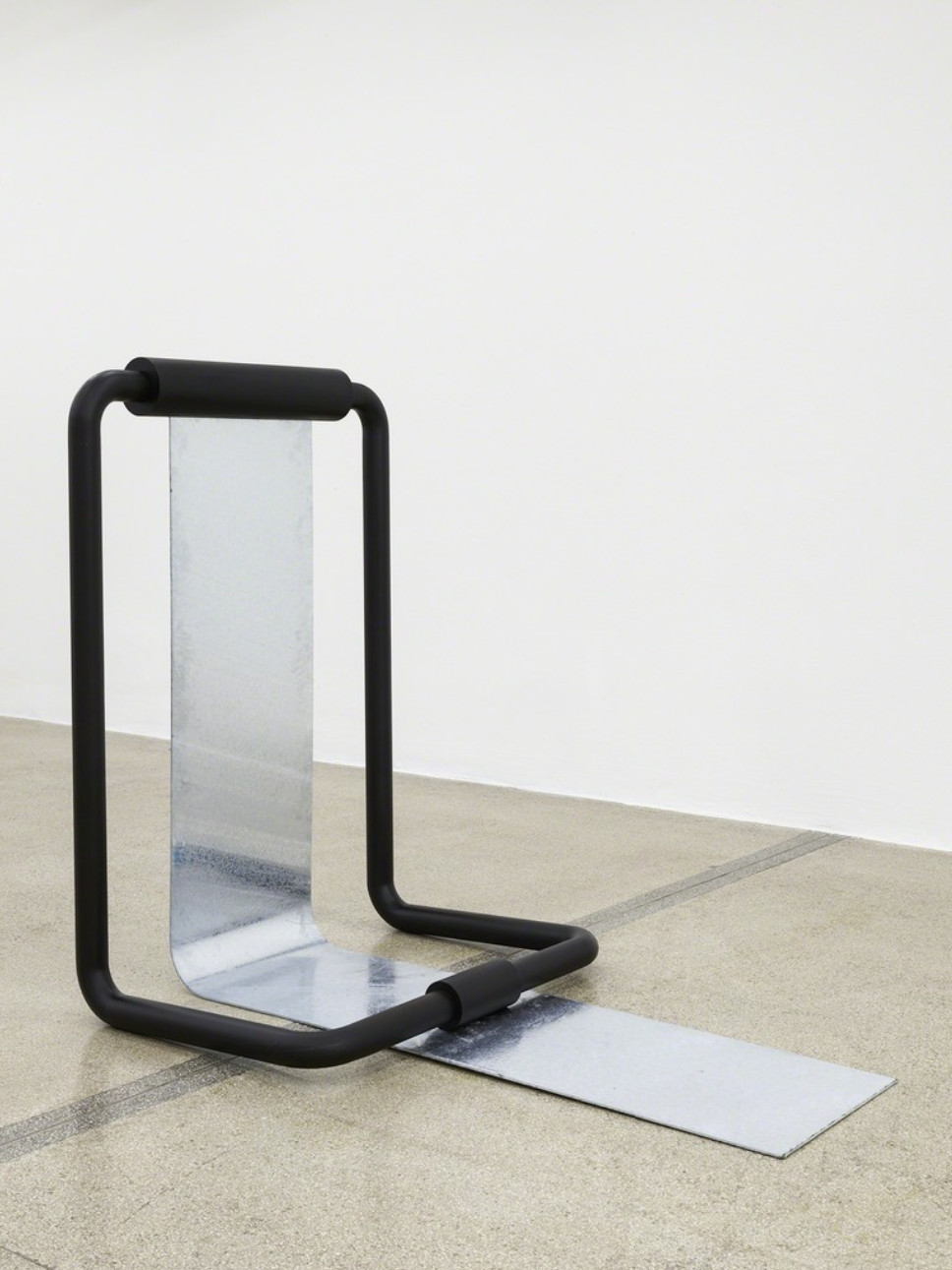
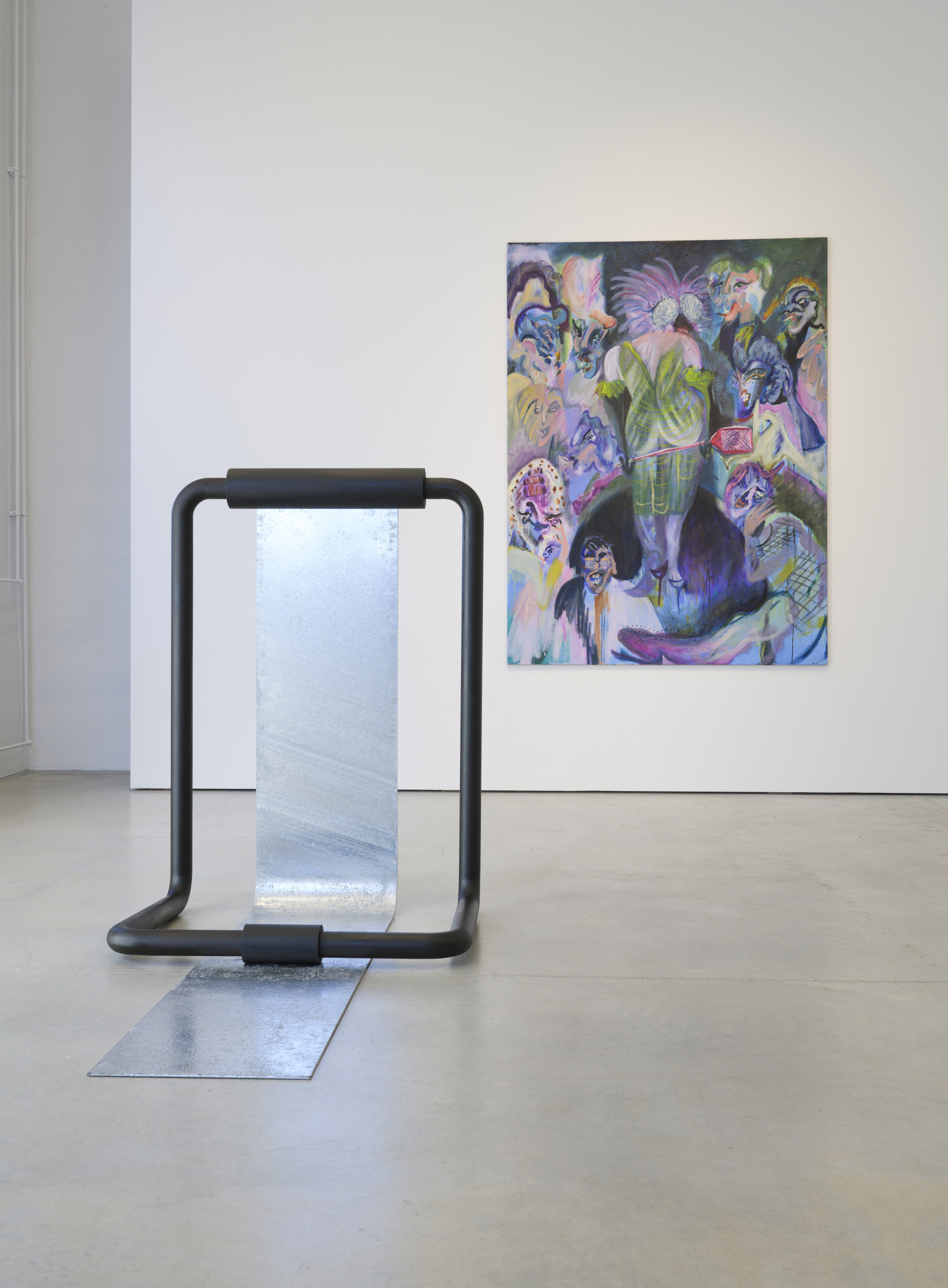
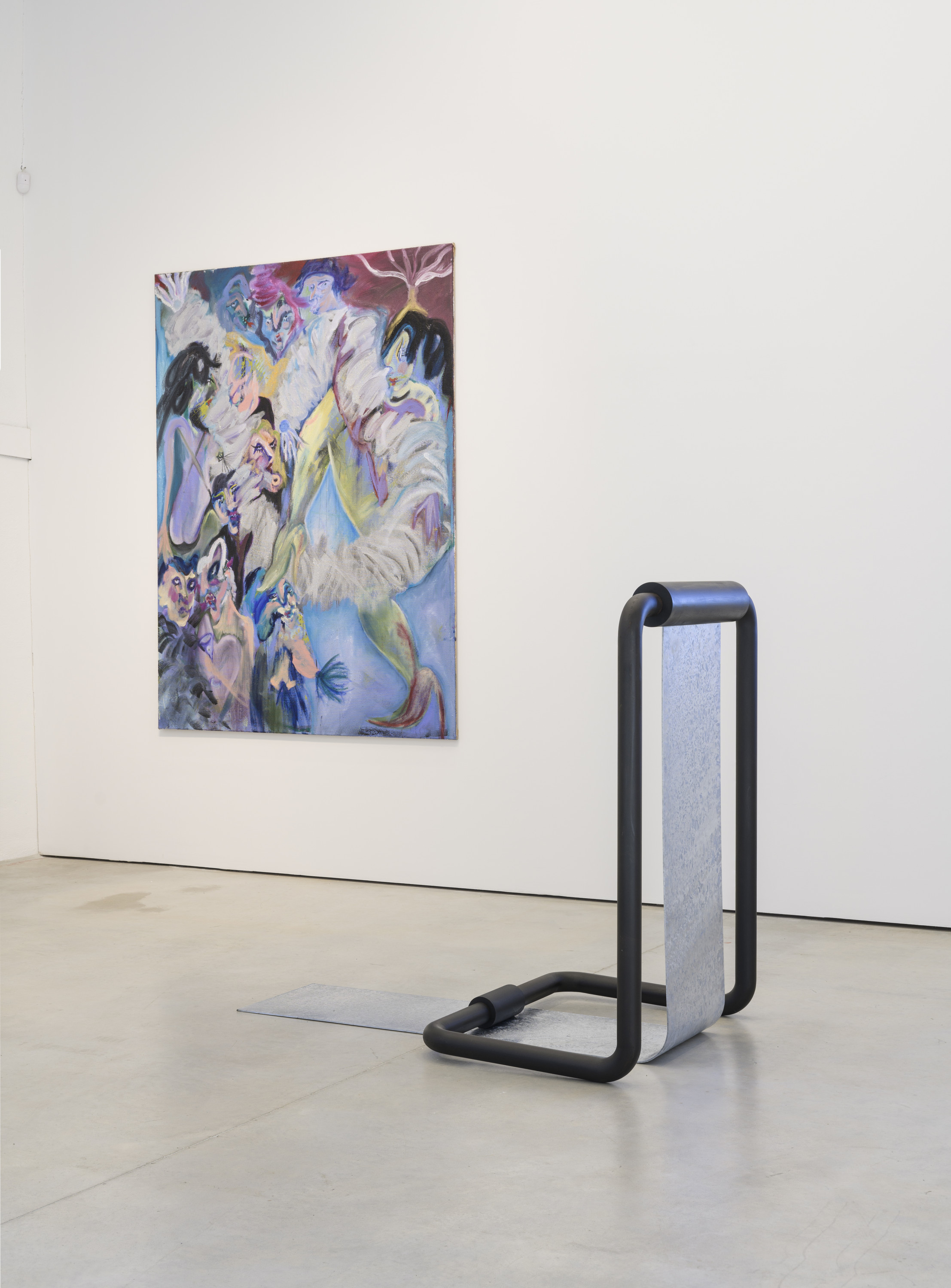
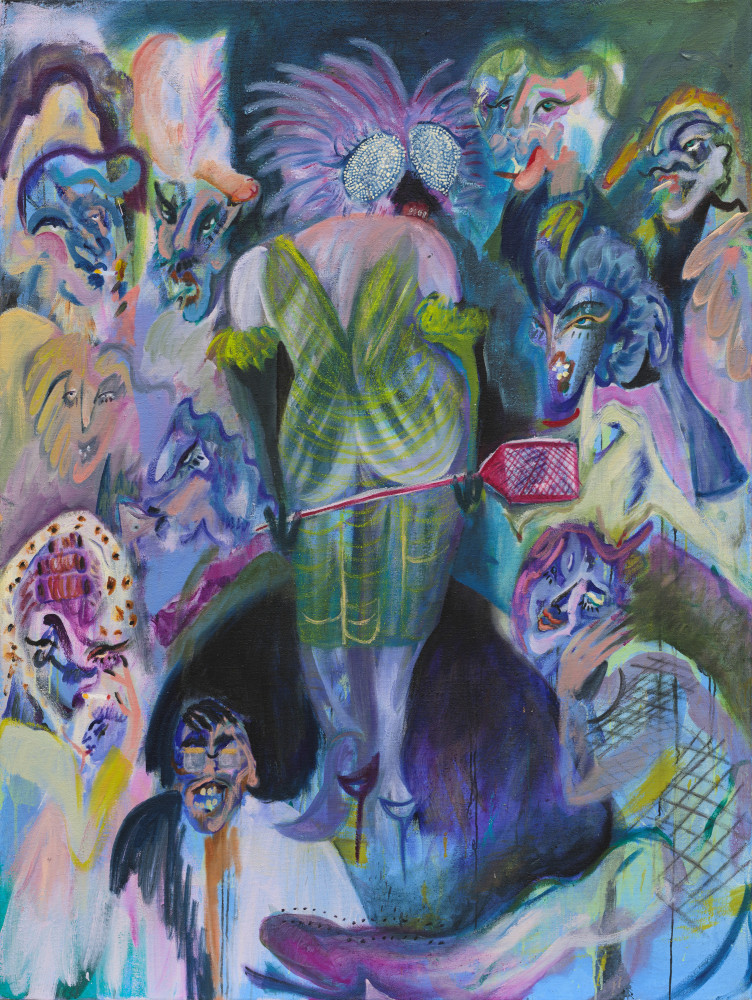
'Buzz Buzz Buzz'
acrylic, oil, canvas 200×150cm 2023
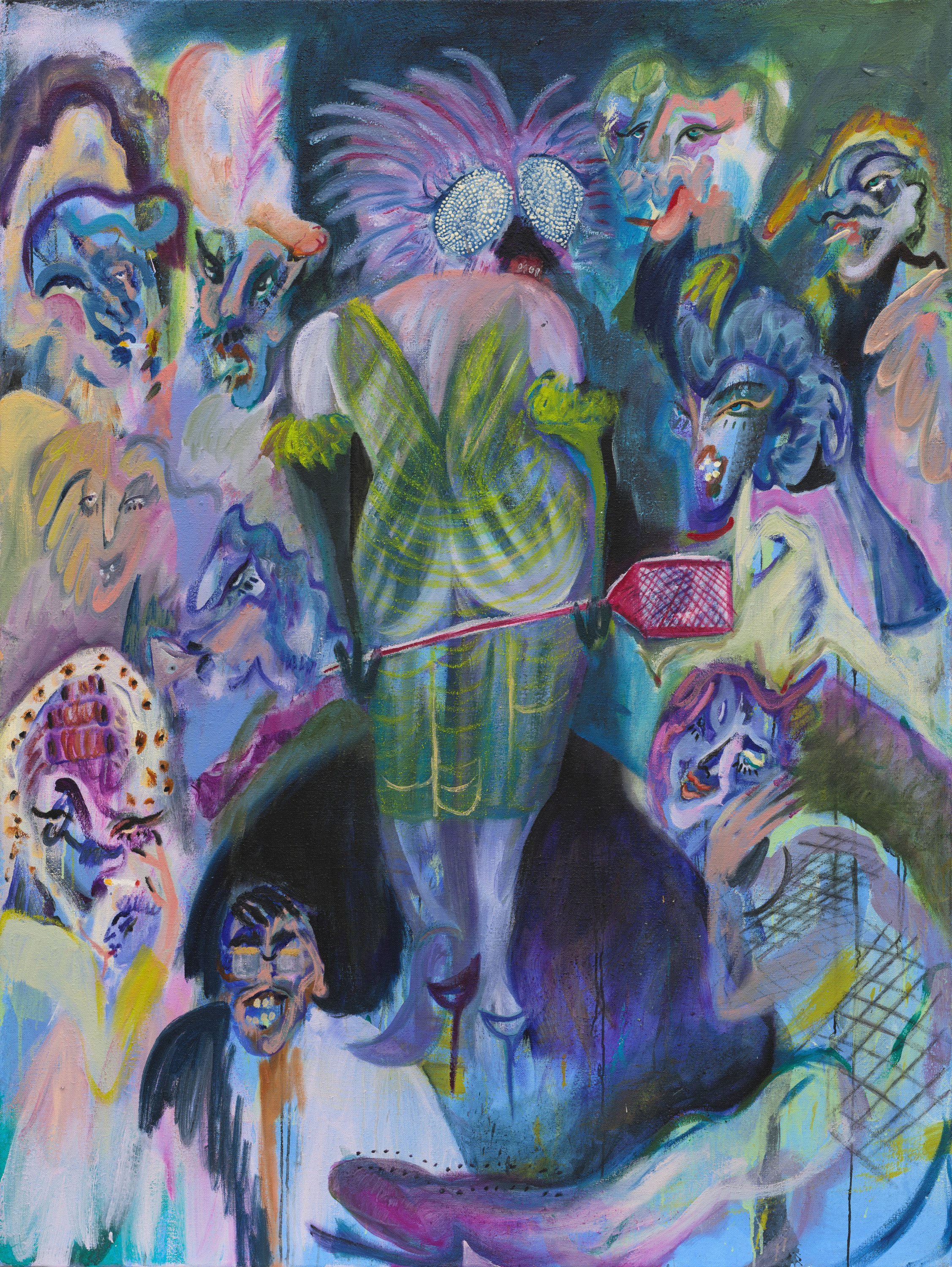

'34°7'22"N 118°20'50"N '
acrylic, oil, canvas 170×150cm 2022
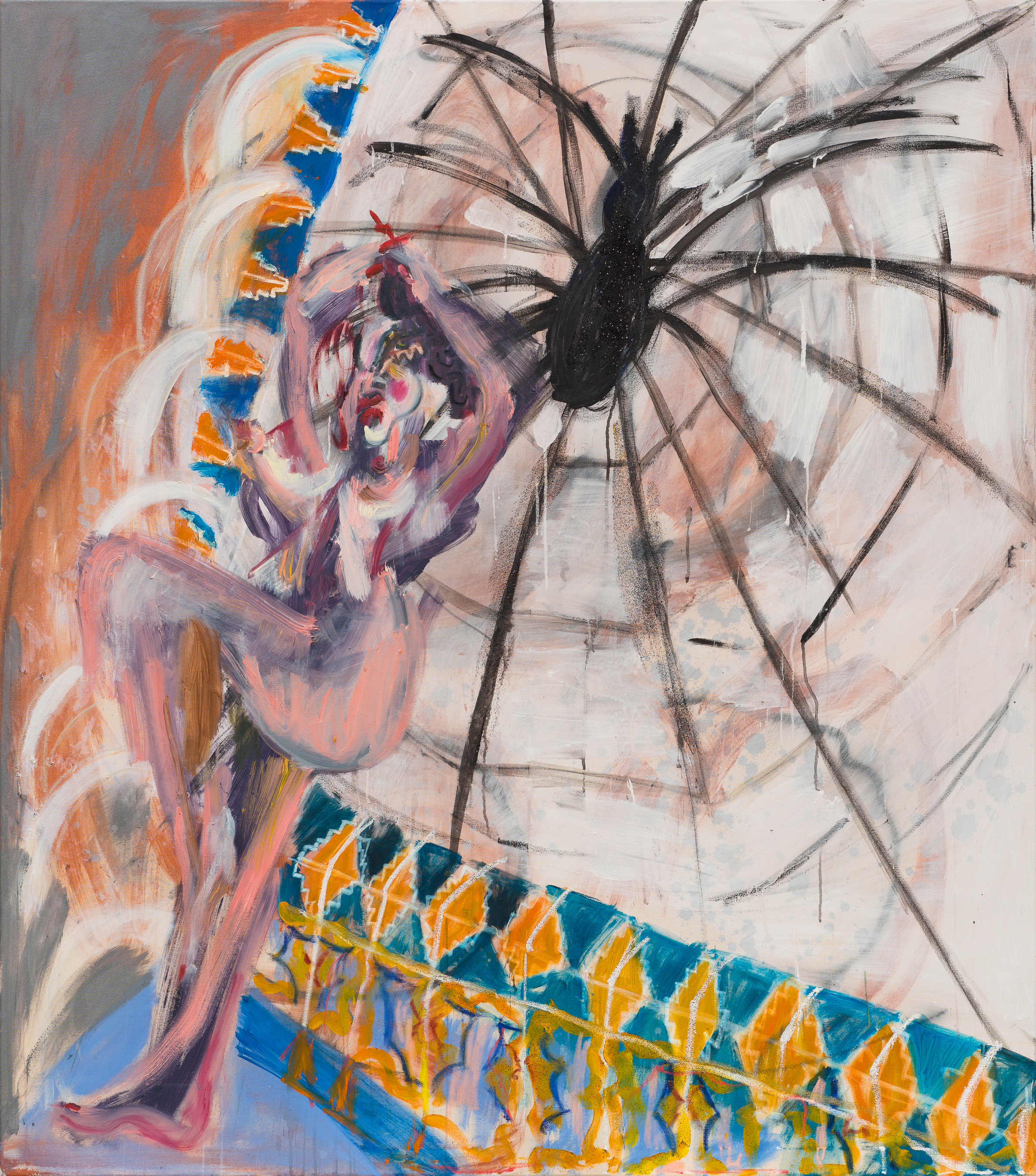
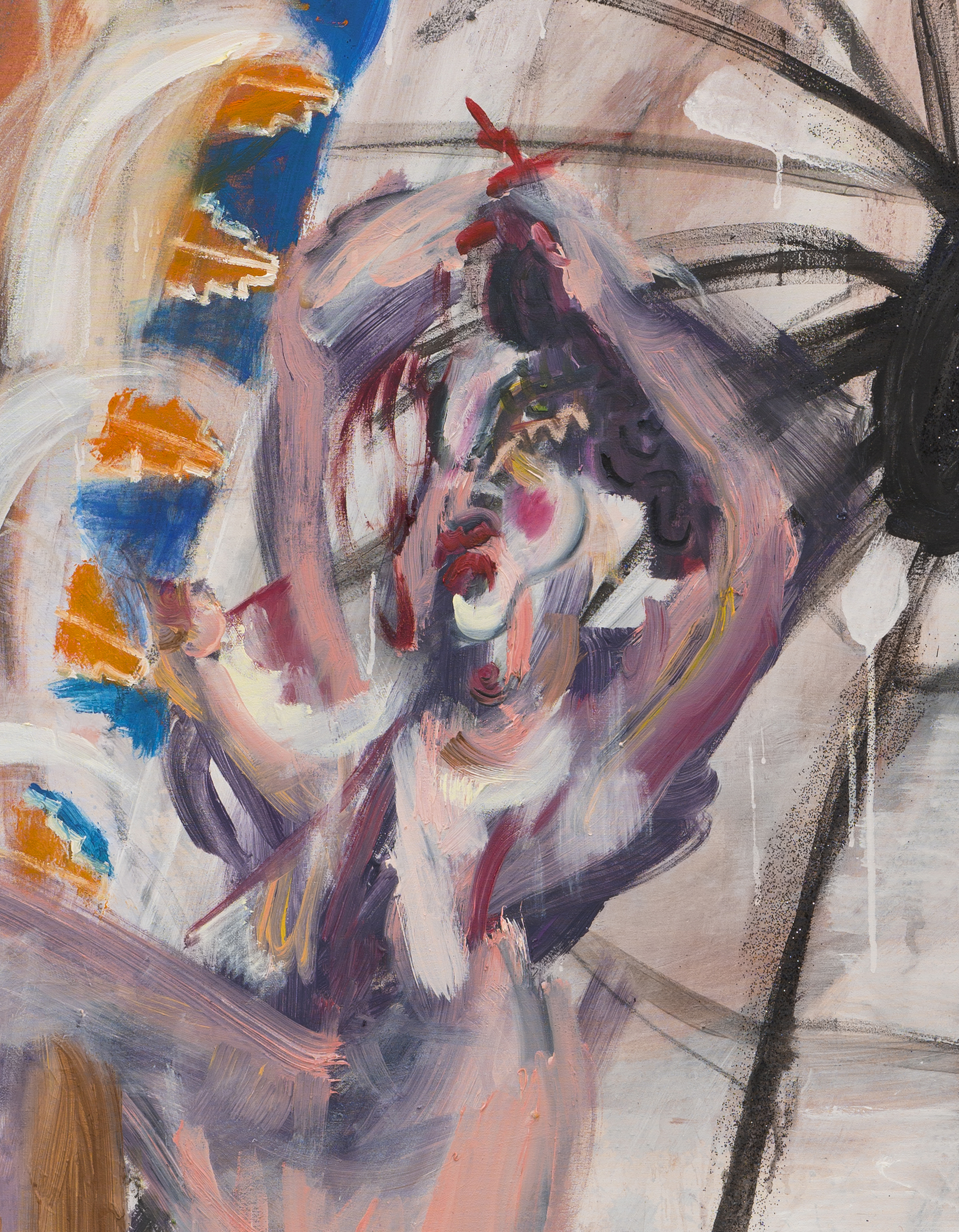
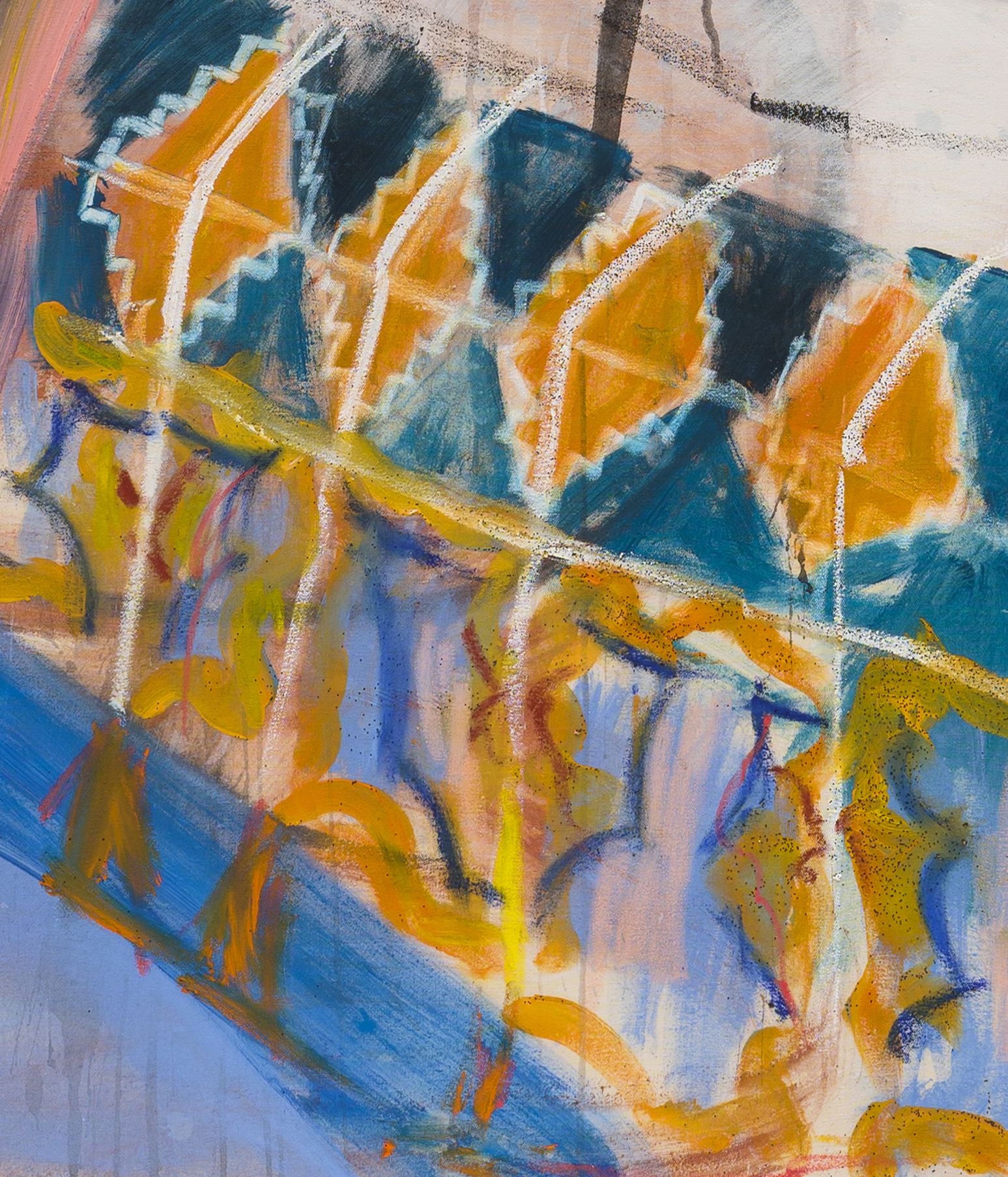

'And It’s Just Because'
acrylic and oil on canvas 200×150cm 2023
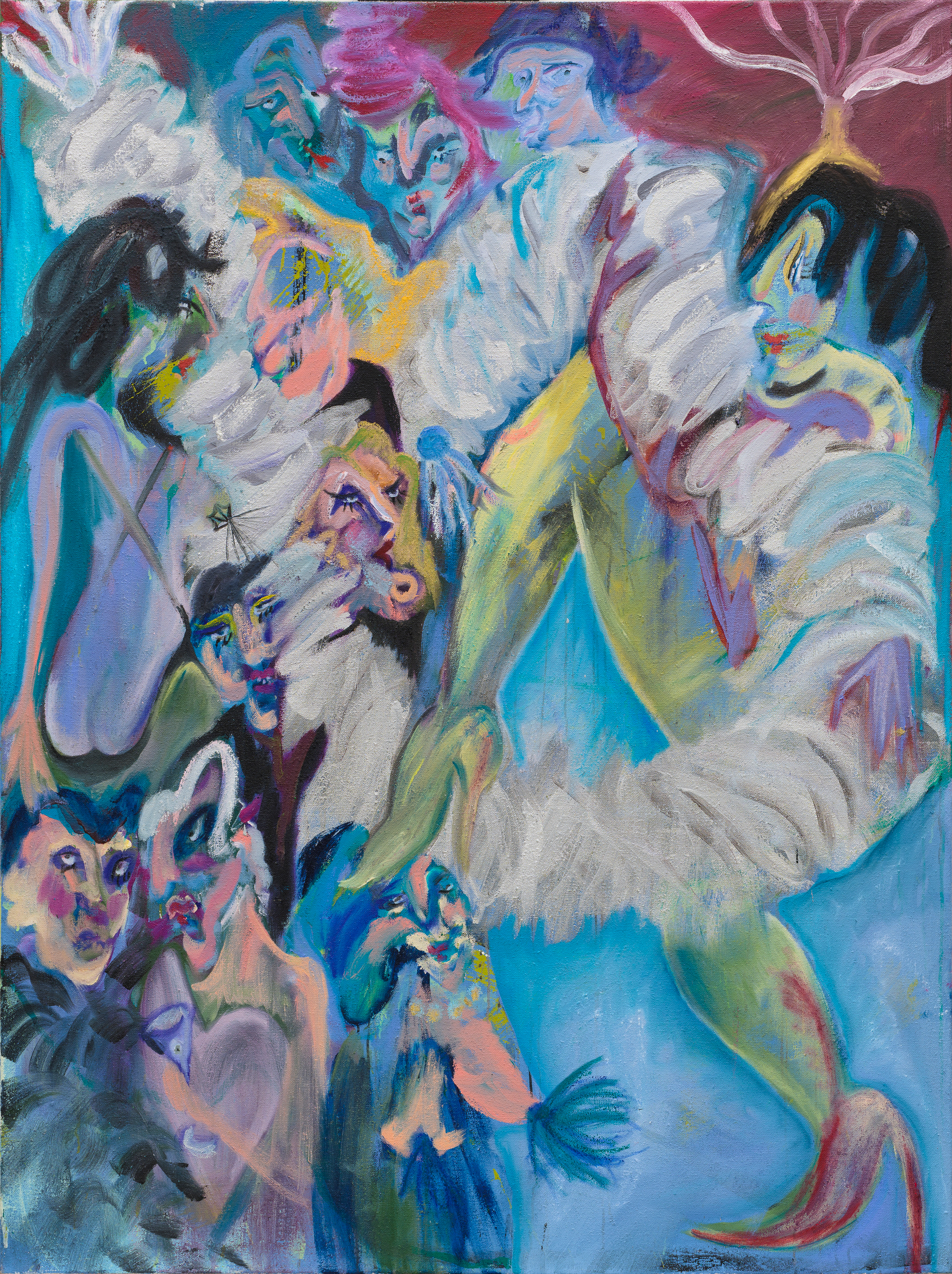
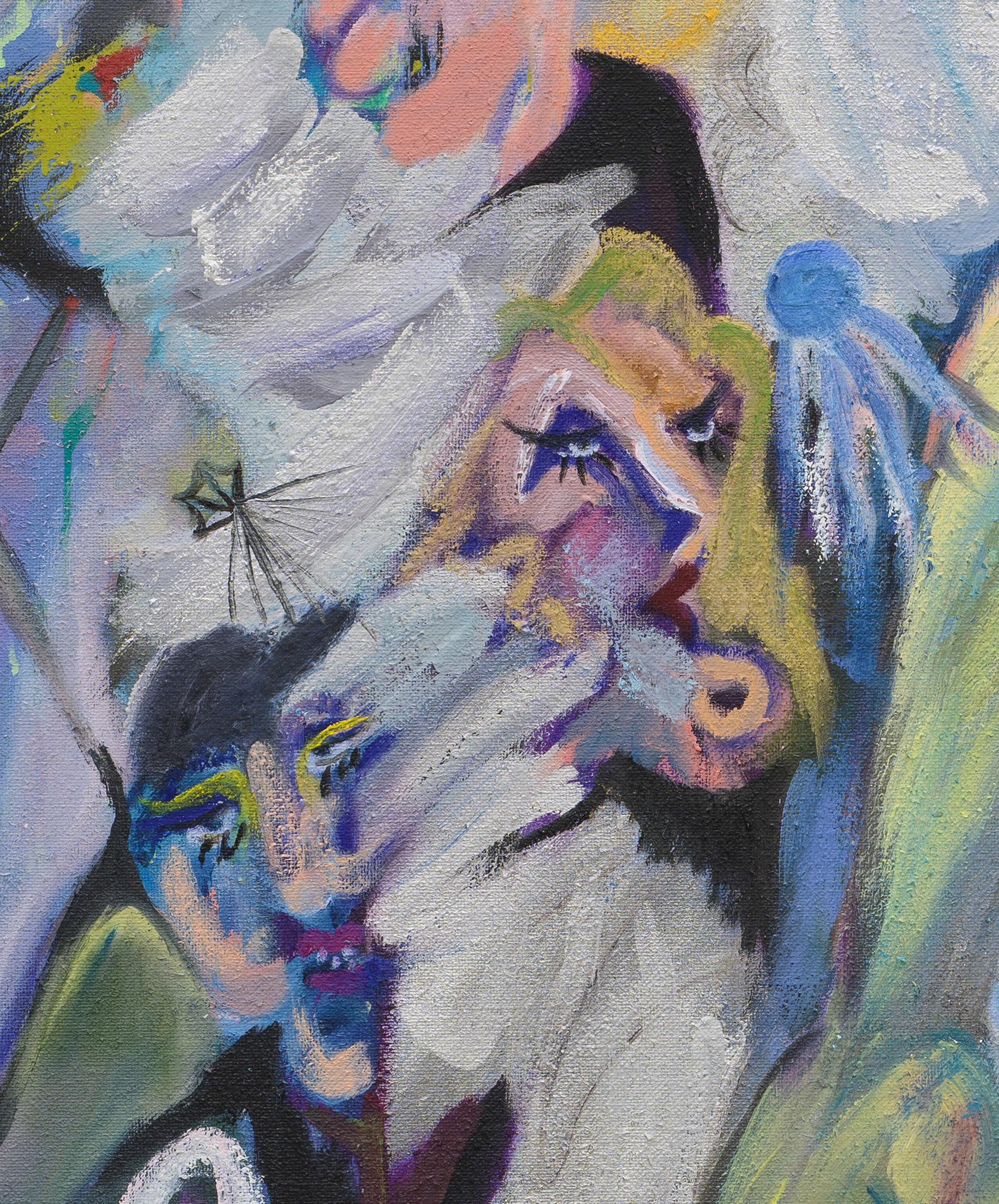
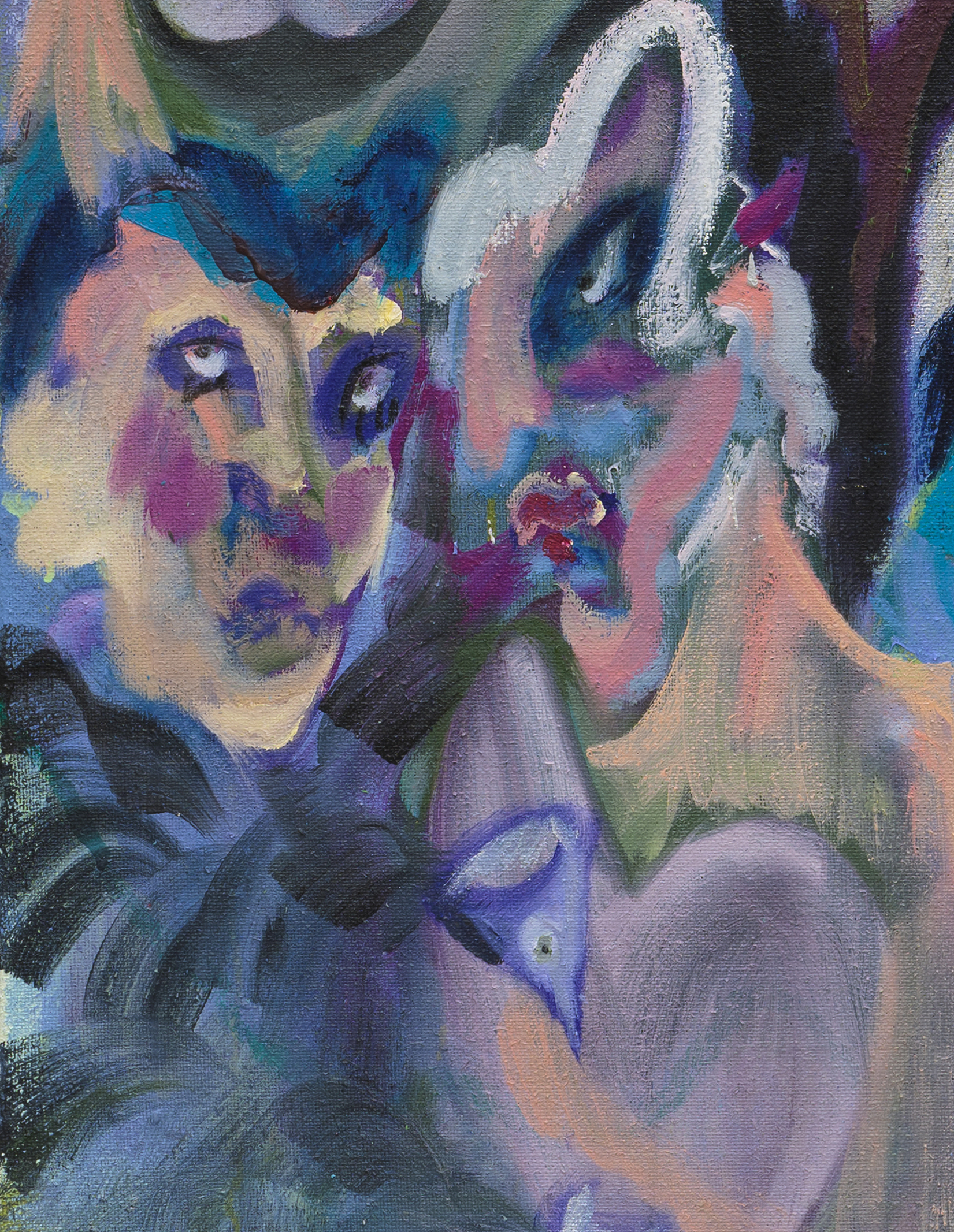
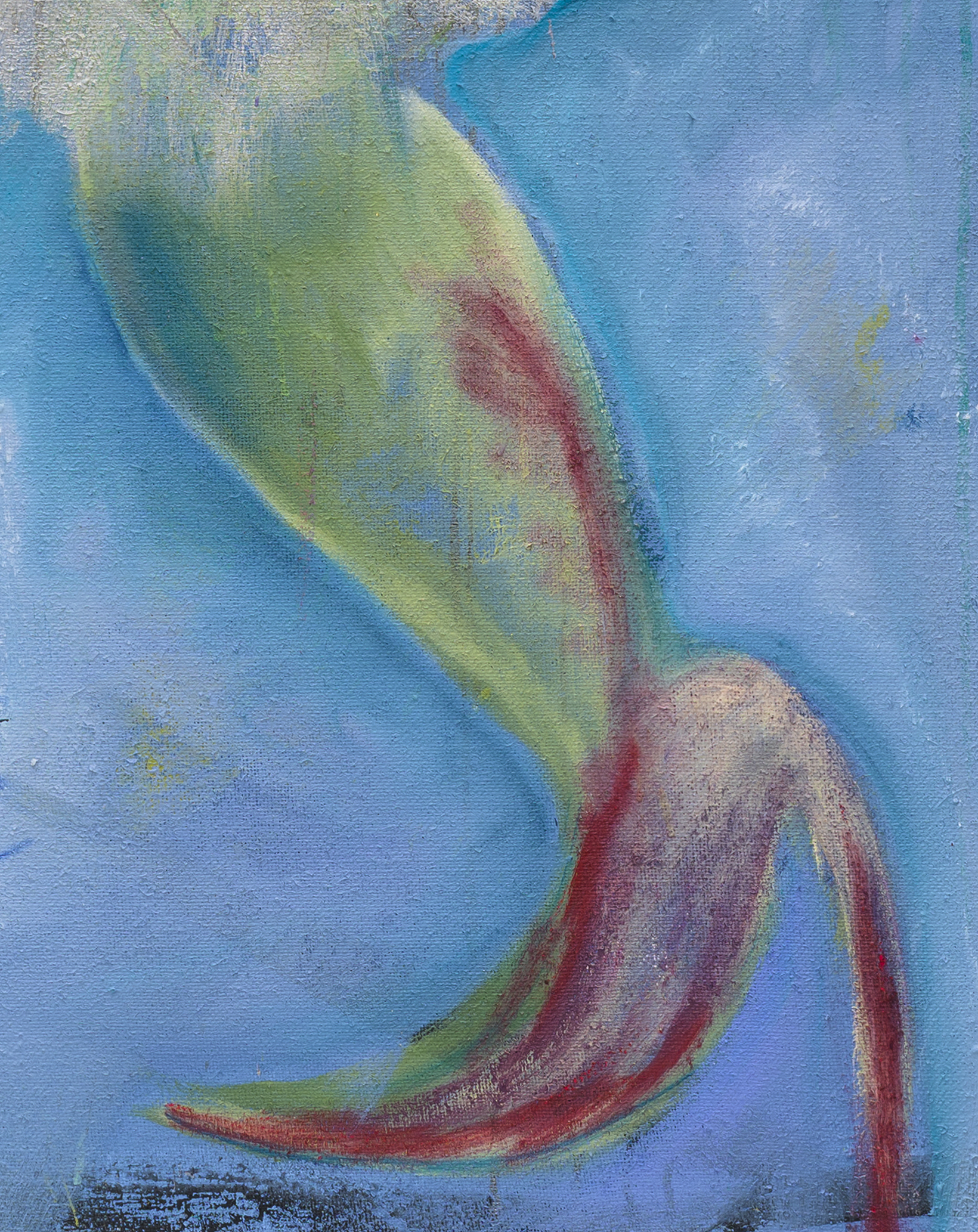
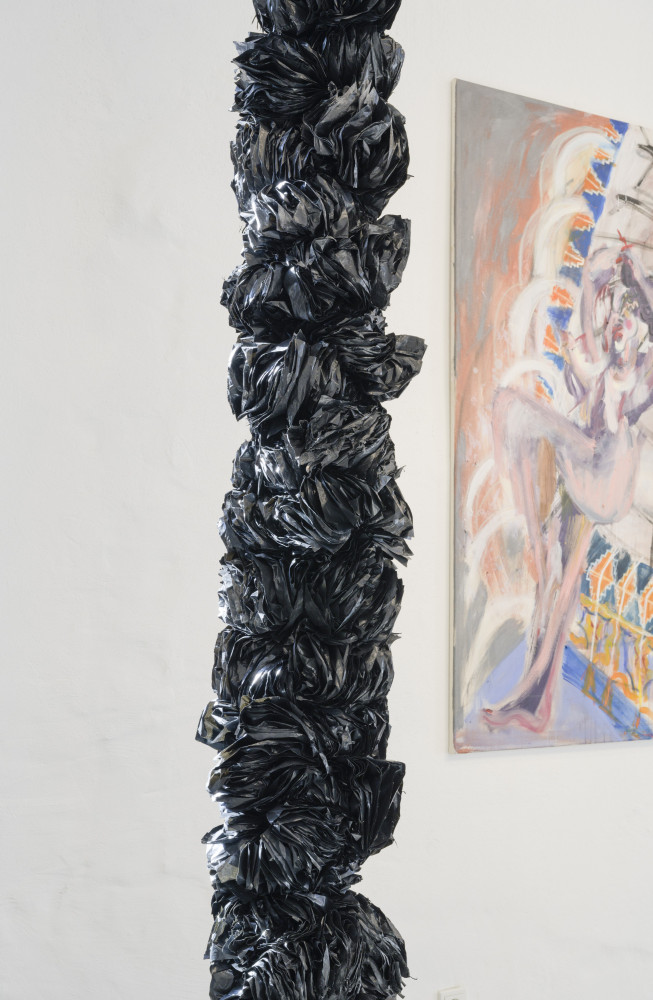
'The Boa'
garbage bags 200×40cm
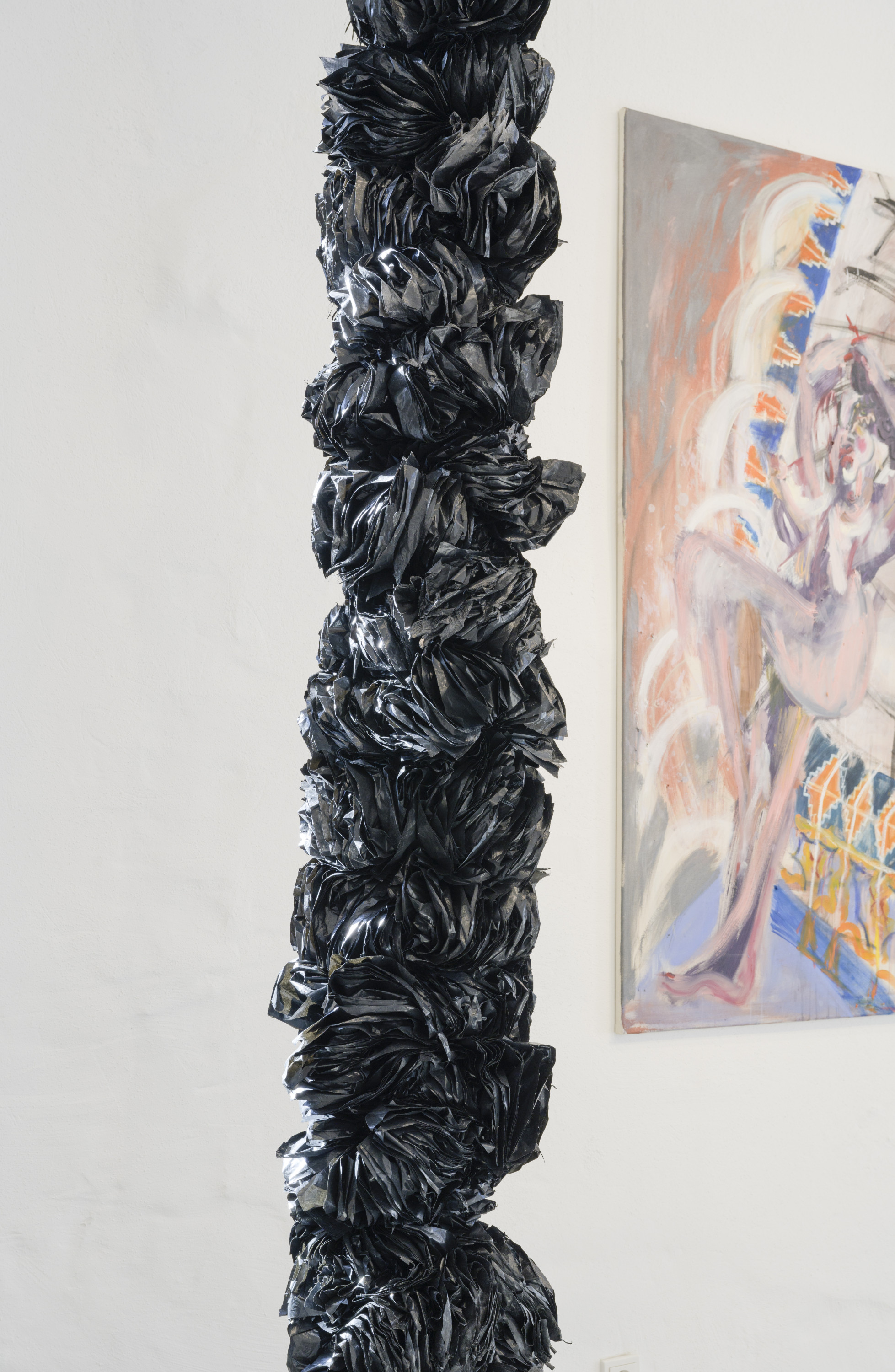
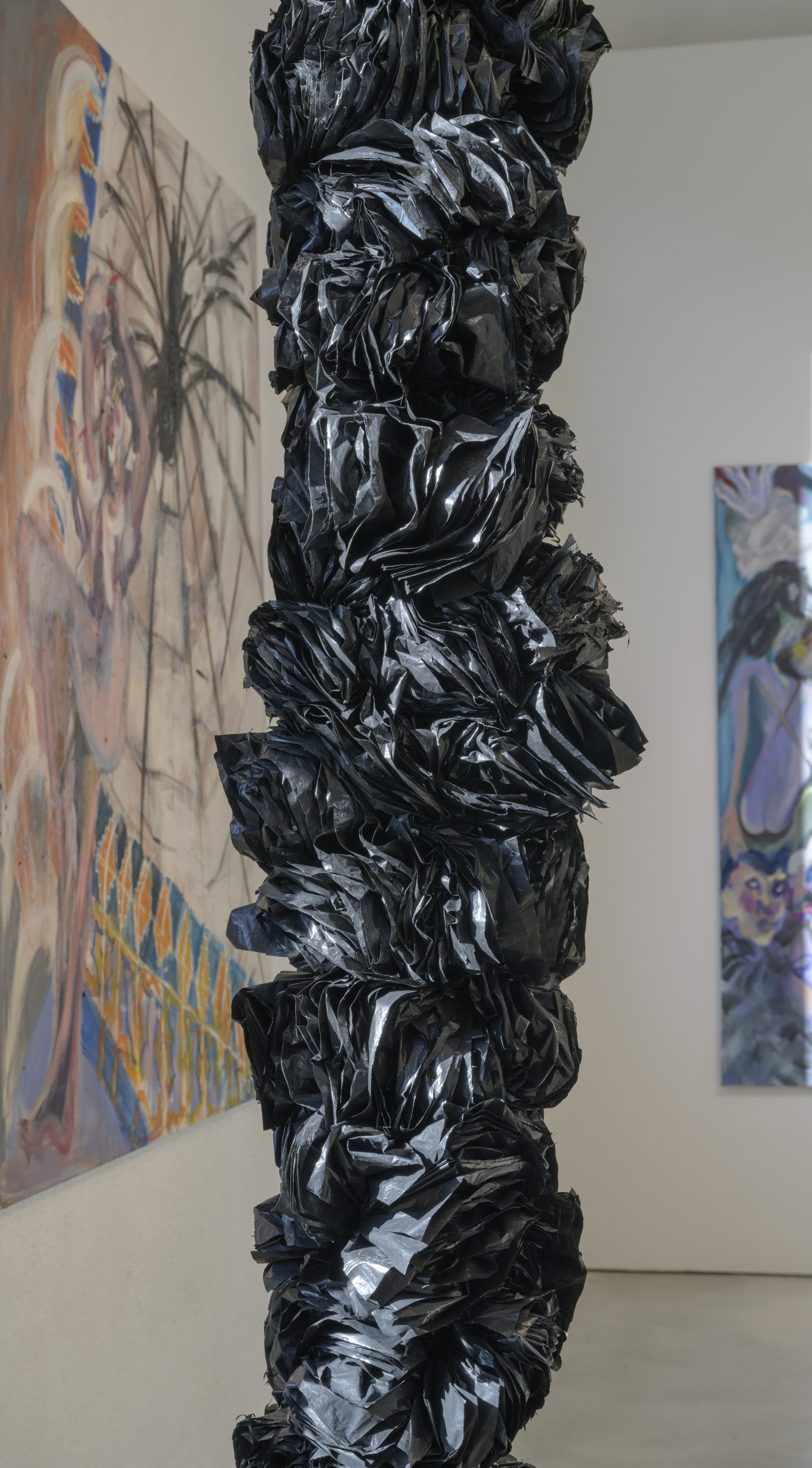
installation views
View: ,In A Poem Is Being Written, US queer theorist Eve Kosofsky Sedgwick generates a connection between the writing of poetry and being spanked as a child, borrowing from Sigmund Freud’s famed text on fantasy A Child Is Being Beaten not just in her title. For her, the link is biographical or even autofictional, drawn from the simultaneity of these two experiences in her life and their conflation into rhythm: “When I was a little child the two most rhythmic things that happened to me were spanking and poetry.” (Kososfky Sedgwick, Tendencies, p. 182ff.) The text is a hugely witty critical encounter that shamelessly uses categories of psychoanalysis to appraise the author’s own childhood poems as a literary oeuvre, touching at the same time on kink/fetish and speculating on the aesthetic and psychological origins thereof. Recalling these childhood scenes and filling them at the same time with narrative elements, Sedgwick describes a tableau of the author and her parents, her siblings looking on. This setting—understood by Freud too as something that the daydreamer overlooks, but is simultaneously part of—is one that Sedgwick then connects to the writing of poetry, thus internalizing and appropriating the deeds and the rhythms: “to brazen, to conceal, to savage, to adorn, or to abstract the body of one’s own humiliation.”
She thus participates in a critical encounter with fantasy as a psychoanalytic category, understanding it no longer as something related to perversion or as a deviant sexuality insufficiently or incorrectly developed: since roughly the second half of the 20th century, it has been understood not as a problem or the secret desire of the pervert, but instead as part of sexuality itself. A shift from the pathological to a regular feature of desire. In fantasy, then, there is desubjectification in the space between desiring and being overwhelmed, with the thrill subsisting in just that dissolution of fixed boundaries.
Different as they are, the works of Toni Schmale and Sevina Tzanou both tackle the ideas of strength, discipline, tension, and letting go evoked in elements like the reference to burlesque or the presence of modified fitness gear. The language of the body—per Kathy Acker, muscles twitching in total exhaustion, the moment after loss of control—is insinuated in gestures and scenes that imply speed and intoxication, but also by the presence of heavy matter, of materials that can be manipulated only when subjected to enormous force or heat, after which they reveal traces of the power and energy invested in them.
Thus, so I want to suggest, the two artists’ approaches to materials are not just similar in formal terms, with their hoses, snakes, tubes, and rods. Both can also be understood as scenes—as evocations of fantasies that imply an absent body on-stage or in the gallery, a body reacting to those scenes and being looked upon in precisely the same way the works are looked upon, both in the painted audiences of Sevina Tzanou and with the objects of Toni Schmale.
In a call with the two artists while preparing the exhibition and prepping this text, the sentence “When I look at your art, all I see is sex” was spoken. It’s this idea I hoped to explore here.
Text by Anke Dyes
Translated from German by Matthew James Scown
The exhibition is supported by the Cultural Endowment of Estonia.
Toni Schmale’s (b. 1980, Hamburg, lives and works in Vienna) practice encompasses sculptures as well as performative interventions, video pieces, and graphic art. Her work scrutinizes social power relations and a hegemonic society’s stereotypical gender roles, which she counters with gender-political utopias served up with characteristically sly humor masking radical dauntlessness. Schmale’s metal, concrete, and rubber sculptures have the air of a fleet of dysfunctional machines while also calling up associations of fitness equipment and torture instruments, surveying a wide terrain crisscrossed by desires, from the yearning for physical perfection to practices of sexual gratification.
Sevina Tzanou (b. 1994, Athens, lives and works in Bonn) collapses bodies, space, and time in her painting process. Through an engagement with Burlesque, drama, and drag communities she explores the subjectivity of the femme – a hyper-feminine performance which celebrates and annunciates the queer characteristics of femininity. Through a hyper-visualization of femininity, Tzanou’s work, and notions of the femme, call attention to the very constructed nature of femininity and reclaim that construction with all its glossy, frilly, rich characteristics inherent in its deployment.
